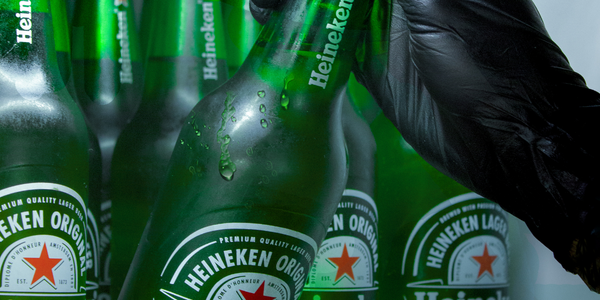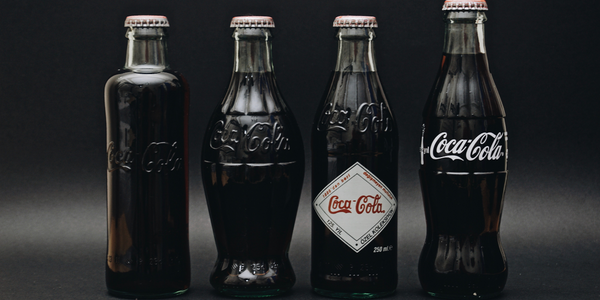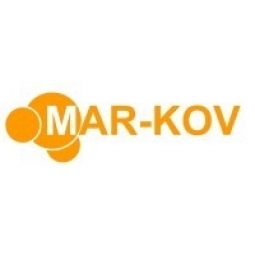Technology Category
- Application Infrastructure & Middleware - Data Exchange & Integration
- Functional Applications - Inventory Management Systems
Applicable Industries
- Food & Beverage
- Retail
Applicable Functions
- Sales & Marketing
- Warehouse & Inventory Management
Use Cases
- Inventory Management
- Picking, Sorting & Positioning
Services
- System Integration
- Training
About The Customer
Custard Stand Food Products is a company based in Webster Springs, West Virginia, known for its Hot Dog Chili and Chili Soup. The company provides its products to distributors/retailers and sells directly to customers online and in The Custard Stand restaurants. In 2003, Dee and Angie Cowger converted a three-bay car wash behind their family restaurant into a USDA-approved production facility and launched Custard Stand Food Products. The company's facility regularly produces and packages more than 4,000 pounds of hot dog chili and chili soup. Following an appearance on ABC’s reality show “SHARK TANK” in 2016, the company experienced a significant increase in retail and online sales.
The Challenge
Custard Stand Food Products, a West Virginia-based company known for its Hot Dog Chili and Chili Soup, experienced a significant increase in sales following an appearance on ABC’s reality show “SHARK TANK.” This surge in demand from large retailers such as Wal-Mart, Kroger, and Sam’s Club, smaller chains, and independently owned stores strained the company's existing Excel/paper system for tracking inventory and production. The company was spending a significant amount of time and resources preparing for food safety audits and mock recalls. Additionally, the paper-based system made mock recalls a tedious process, involving the retrieval and cross-referencing of multiple receiving, production, and shipping records. The company also feared the loss or damage of paper records.
The Solution
To address these challenges, Custard Stand turned to Mar-Kov Computer Systems' food manufacturing software, Vittles. This software allowed Custard Stand to improve inventory control, streamline planning operations, and efficiently maintain food traceability records. Vittles records all lot information and barcodes for raw materials at the point of receipt, and Custard Stand records each lot used in its batches electronically. They also record lot numbers at the time of shipping by barcode-scanning the assembled sales orders. The software also provides accurate, instantaneous inventory lookups, eliminating the need for difficult-to-maintain spreadsheets or physical checks on stock and expiration dates. Furthermore, Vittles' Material Requirements Planning (MRP) functionality provides a detailed plan of what materials need to be purchased and manufactured, with quantities and dates specified.
Operational Impact
Quantitative Benefit

Case Study missing?
Start adding your own!
Register with your work email and create a new case study profile for your business.
Related Case Studies.

Case Study
The Kellogg Company
Kellogg keeps a close eye on its trade spend, analyzing large volumes of data and running complex simulations to predict which promotional activities will be the most effective. Kellogg needed to decrease the trade spend but its traditional relational database on premises could not keep up with the pace of demand.

Case Study
HEINEKEN Uses the Cloud to Reach 10.5 Million Consumers
For 2012 campaign, the Bond promotion, it planned to launch the campaign at the same time everywhere on the planet. That created unprecedented challenges for HEINEKEN—nowhere more so than in its technology operation. The primary digital content for the campaign was a 100-megabyte movie that had to play flawlessly for millions of viewers worldwide. After all, Bond never fails. No one was going to tolerate a technology failure that might bruise his brand.Previously, HEINEKEN had supported digital media at its outsourced datacenter. But that datacenter lacked the computing resources HEINEKEN needed, and building them—especially to support peak traffic that would total millions of simultaneous hits—would have been both time-consuming and expensive. Nor would it have provided the geographic reach that HEINEKEN needed to minimize latency worldwide.

Case Study
Improving Production Line Efficiency with Ethernet Micro RTU Controller
Moxa was asked to provide a connectivity solution for one of the world's leading cosmetics companies. This multinational corporation, with retail presence in 130 countries, 23 global braches, and over 66,000 employees, sought to improve the efficiency of their production process by migrating from manual monitoring to an automatic productivity monitoring system. The production line was being monitored by ABB Real-TPI, a factory information system that offers data collection and analysis to improve plant efficiency. Due to software limitations, the customer needed an OPC server and a corresponding I/O solution to collect data from additional sensor devices for the Real-TPI system. The goal is to enable the factory information system to more thoroughly collect data from every corner of the production line. This will improve its ability to measure Overall Equipment Effectiveness (OEE) and translate into increased production efficiencies. System Requirements • Instant status updates while still consuming minimal bandwidth to relieve strain on limited factory networks • Interoperable with ABB Real-TPI • Small form factor appropriate for deployment where space is scarce • Remote software management and configuration to simplify operations

Case Study
Energy Management System at Sugar Industry
The company wanted to use the information from the system to claim under the renewable energy certificate scheme. The benefit to the company under the renewable energy certificates is Rs 75 million a year. To enable the above, an end-to-end solution for load monitoring, consumption monitoring, online data monitoring, automatic meter data acquisition which can be exported to SAP and other applications is required.

Case Study
Coca Cola Swaziland Conco Case Study
Coco Cola Swaziland, South Africa would like to find a solution that would enable the following results: - Reduce energy consumption by 20% in one year. - Formulate a series of strategic initiatives that would enlist the commitment of corporate management and create employee awareness while helping meet departmental targets and investing in tools that assist with energy management. - Formulate a series of tactical initiatives that would optimize energy usage on the shop floor. These would include charging forklifts and running cold rooms only during off-peak periods, running the dust extractors only during working hours and basing lights and air-conditioning on someone’s presence. - Increase visibility into the factory and other processes. - Enable limited, non-intrusive control functions for certain processes.








